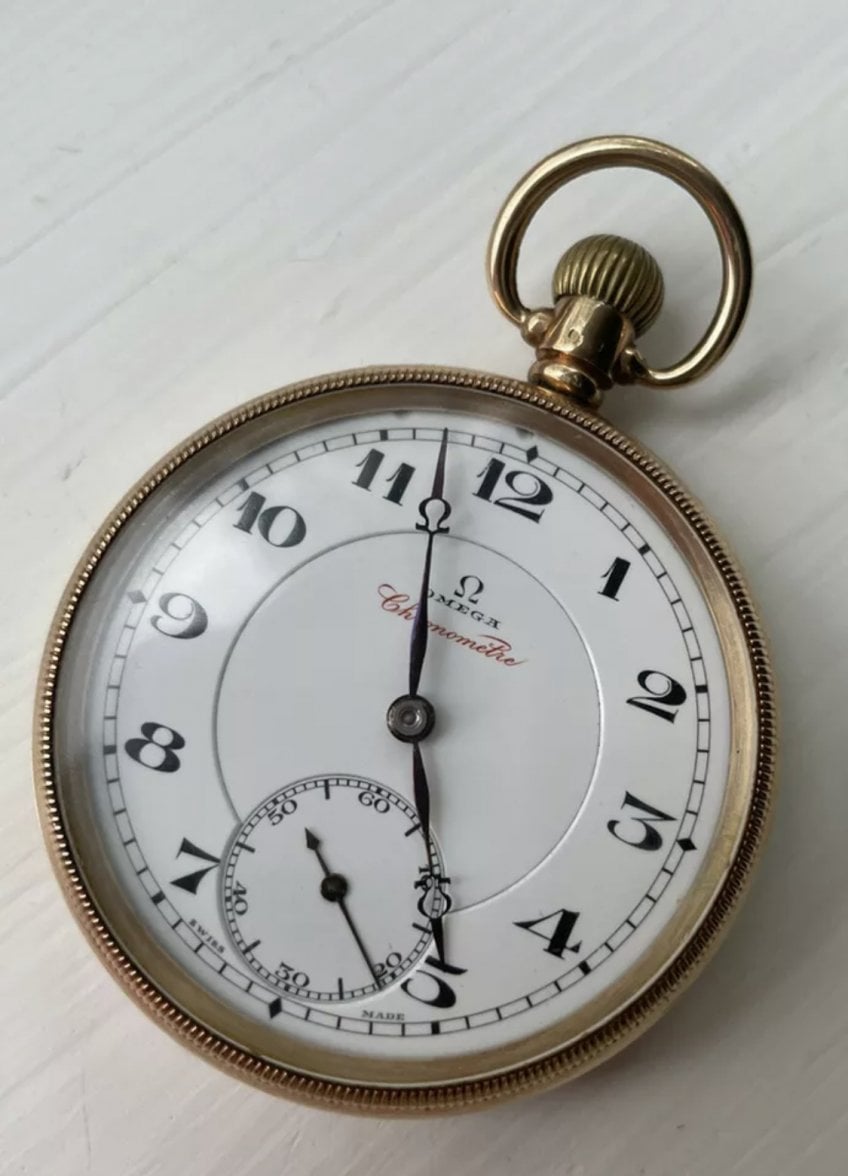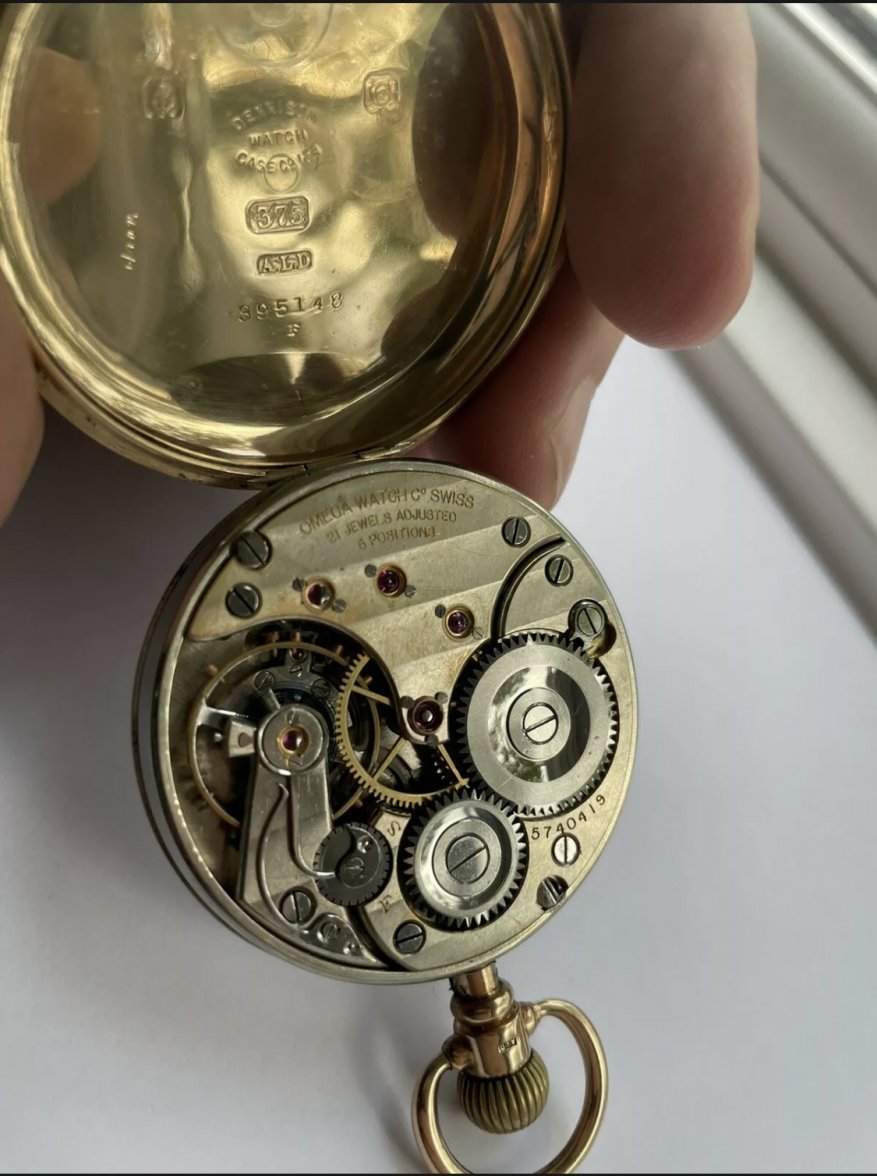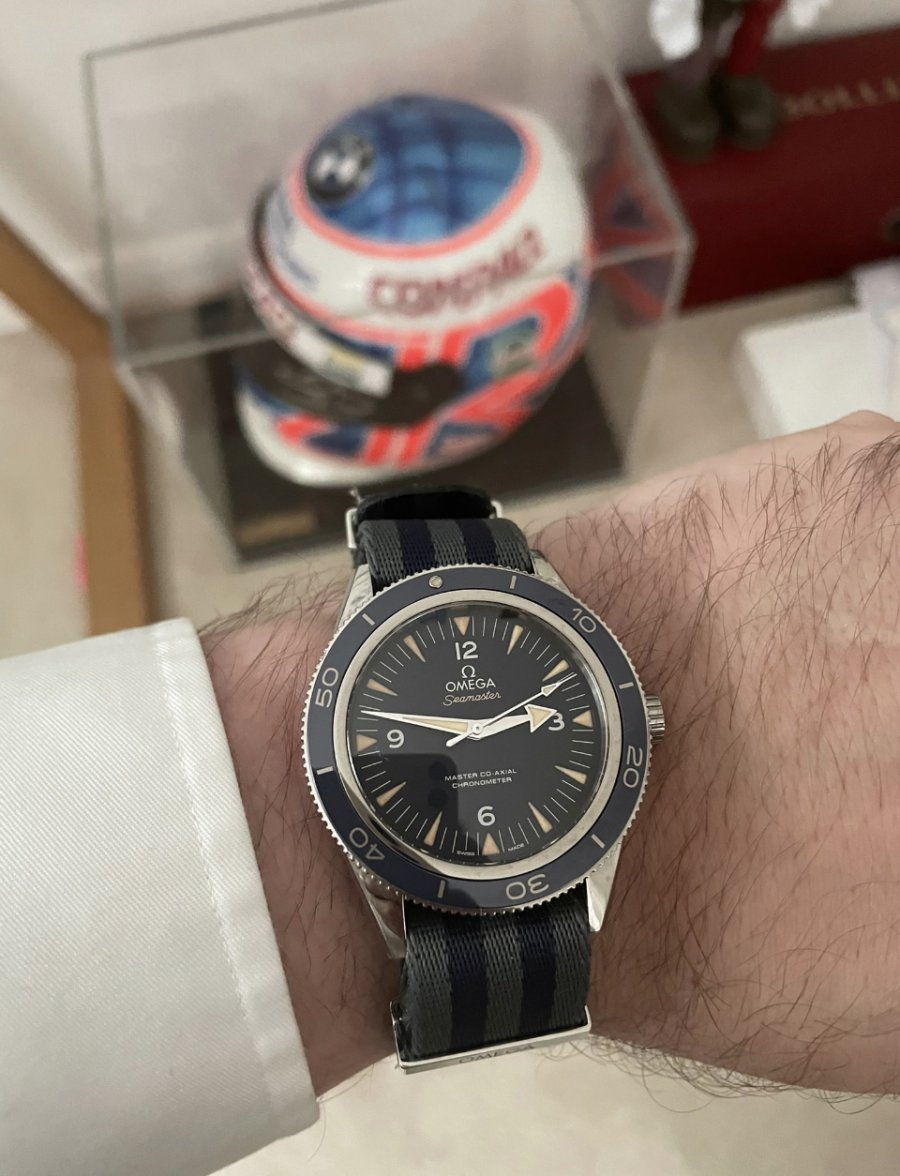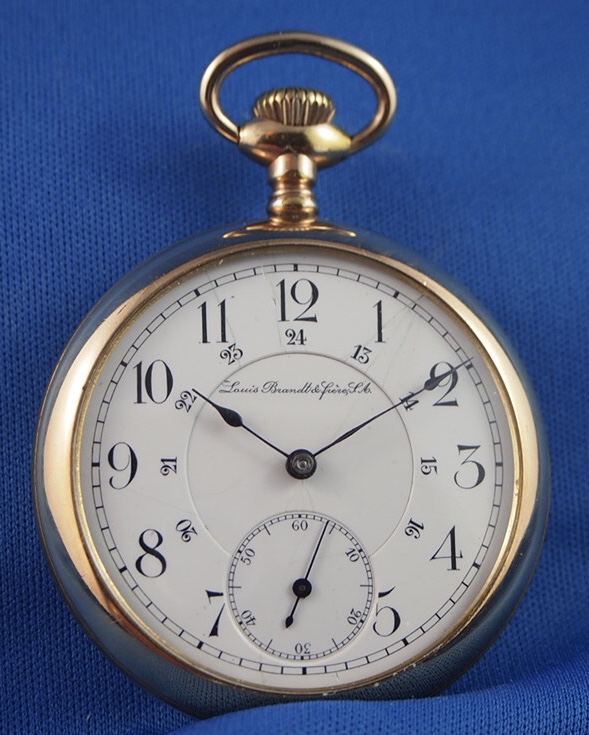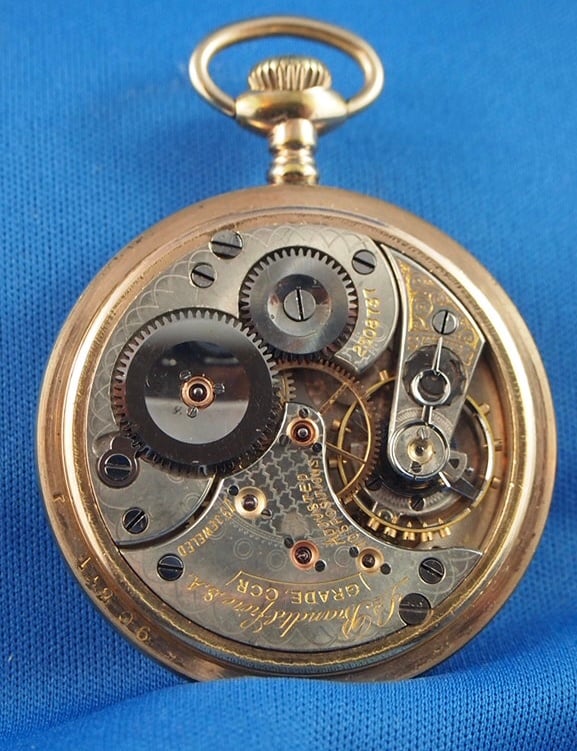The subject Omega is marked as “adjusted to 6 positions”. The dial is marked “Chronometre (sic)”. It has a bi-metallic, temperature compensating balance wheel, Breguet hairspring, cam-type micrometer regulator. It has most of what would be considered as railroad standard, but I doubt the fancy “Omega” hands would have been acceptable. And it is not lever set. I checked the time service rules for many American railroads. Omega is not listed as having been approved for railroad use on U S railroads, according to the tables I read. However, it is possible that a railroad, somewhere, might have accepted that one. The case on the Omega is .375 (9-karat gold), and is by Dennison, an English company. So it would appear as though the subject Omega was meant for the domestic market in Britain where it might have been railroad approved.
According to the time service rules for the CPR in Canada as in effect from 1899 to 1910, Brandt-Omega grade CCR (16-size, 19-jewels), CCCR (16-size, 23-jewels), DDR (18-size, 19-jewels), and DDDR (18-size, 23-jewels) were accepted. The subject is not any one of those. I’ve shown a Brandt, 16-size, 19-jewel, grade CCR, just for comparison. It was railroad approved in Canada.
Among the notable differences between the subject Omega and the Brandt (aside from the difference in jewel count) is the fact that the Brandt has a jewelled safety barrel, and it is lever set. The Omega has a 5xxxxxxx, so it is circa 1916, and the Brandt has a 2xxxxxx serial number which is circa 1905.
Maybe this will help you decide whether to buy it, or walk.
